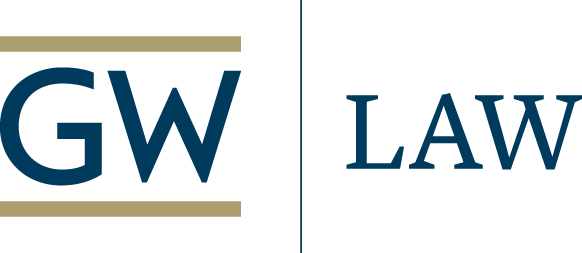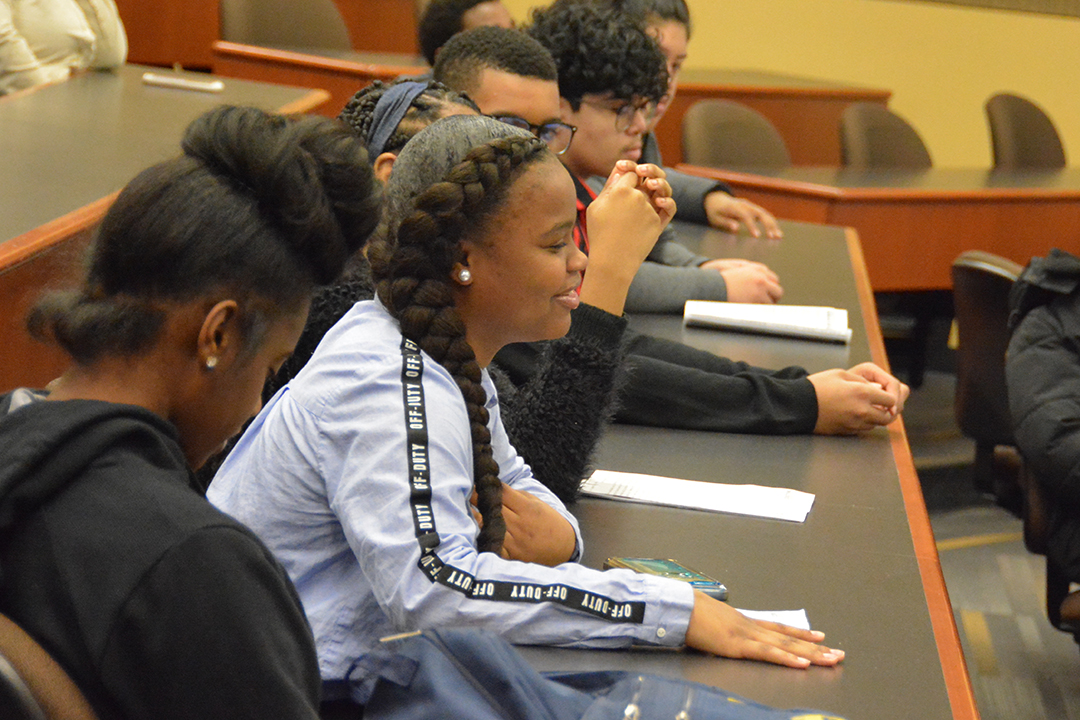Through a Law School Admission Council (LSAC) grant, more than 20 high school students visited GW Law to learn about what a career in the legal profession could look like. They took a tour, heard from current students and alumni, and participated in a mock law school class. The event provided students with general information on the life of a law student, as well as an overview of the admissions process, and encouraged them to consider pursuing a legal career.
The student group came from the Law Academy at Potomac High School in Oxon Hill, Maryland. The student's teacher, Nissa N. Copeman, JD '05, is a GW Law alumna, who made the transition from practitioner to legal educator.
The Law Academy is a college and career readiness program that seeks to nurture and prepare promising young legal scholars for college and, ultimately, law school admissions. Potomac High's Law Academy is the longest running in Prince George's County.
GW Law student ambassadors took the students on a tour of the law school complex, visiting the Jacob Burns Law Library and the Jacob Burns Community Legal Clinics building.
Students then heard from a panel of GW Law students and alumni. Romeo Niyongere, 3L, a member of the Black Law Students Association and the Student Bar Association; Mike Michel, JD '15, President of the Association of Black Law Alumni and an Associate at Buchanan Ingersoll & Rooney; Debbie Baker, Senior Academic Advisor, Pre-Law, for GW undergraduate students; and Richard Samboy, 2L, a member of GW Law's new First Generation and Low Income Professionals (FLIP) group addressed the group.
Panelists shared about their backgrounds and career paths and took questions from the students.
"A lawyer speaks for someone," said Mr. Michel. "I think at the core of who I am and what really drives me is helping people."
Mr. Samboy encouraged the students to pursue a career in the legal profession regardless of their background.
"I know you all come from somewhere that's rough. You're not coming from somewhere that's perfect. If you can make it out of there, you can make it anywhere," Mr. Samboy said. "That's the advantage you have going to law school from undergrad, that you made it out of there. You need to use that as a strength and not a weakness."
Students then participated in a mock law class lead by Professor Roger A. Fairfax, Jr. Professor Fairfax gave the students a search and seizure case to read and analyze.
The event was supported through an LSAC's Diversity Matters program grant, which supports diversity efforts by encouraging law schools to reach out to underrepresented populations, including racial and ethnic groups, the LGBTQ community, individuals with disabilities, and Indigenous Canadians, to consider law as a career. This initiative is designed to expand the pipeline to include students in community college, early college, high school, and middle school by introducing these populations to the legal profession, the law school admission process, and to skills tested on both the LSAT and in the law school classroom.


